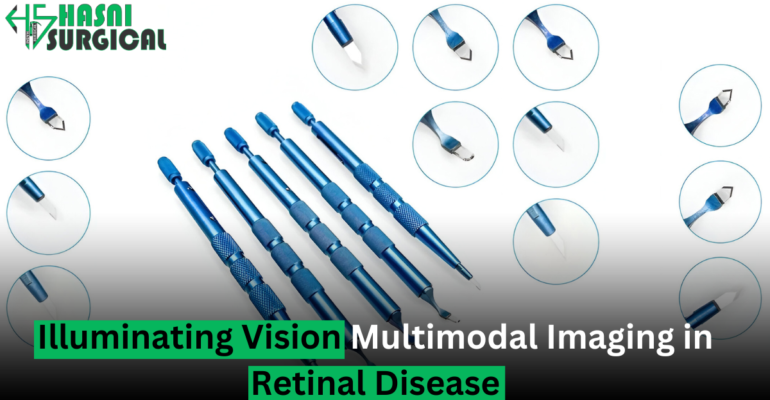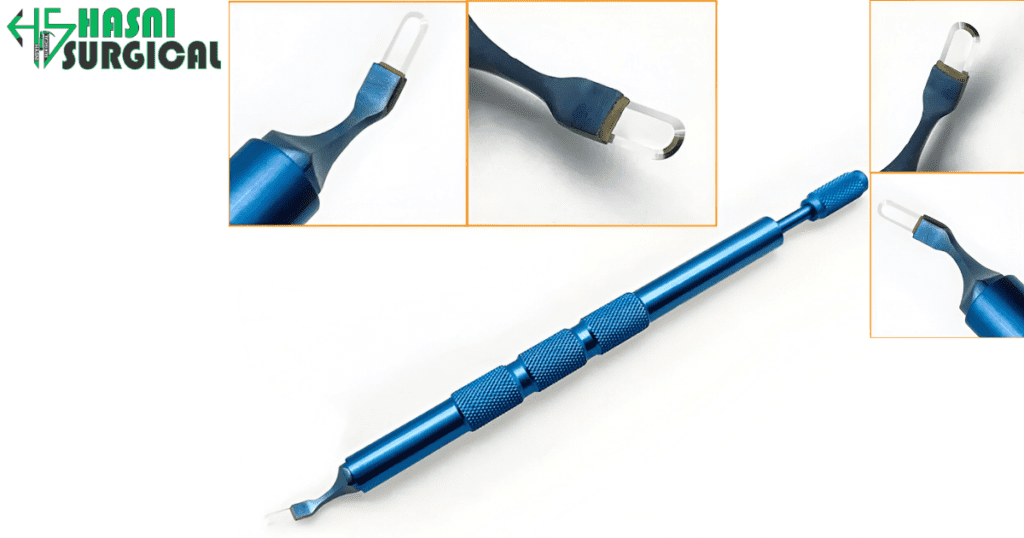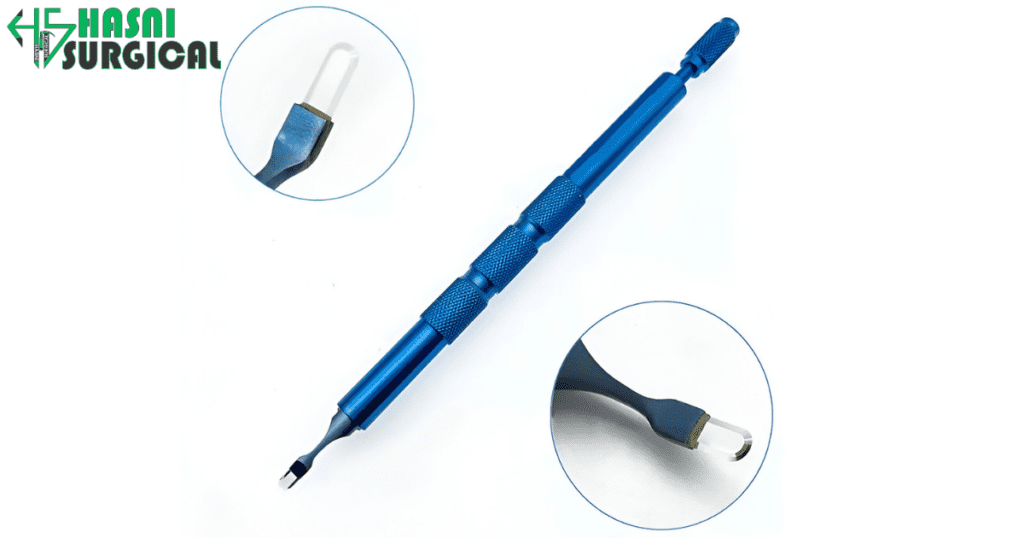Illuminating Vision Multimodal Imaging in Retinal Disease
September 2, 2024 2024-11-21 6:07Illuminating Vision Multimodal Imaging in Retinal Disease

Illuminating Vision Multimodal Imaging in Retinal Disease
Introduction:
Retinal Disease
In the intricate tapestry of human health, few realms hold as much wonder and fragility as the realm of vision. Our eyes, marvels of biology, give us the gift of sight to perceive the world’s beauty. Yet, nestled within the depths of these orbs lies a delicate structure crucial to this extraordinary sense: the retina.
The retina, a thin tissue at the back of the eye, captures light and forms our visual image. From age-related macular degeneration (AMD) to diabetic retinopathy, retinal diseases can obscure vision and threaten perception.
To combat ocular issues, modern medicine now relies on a powerful tool: multimodal imaging. This technology offers a detailed view of the retina, helping to preserve vision and ensure optimal retinal health.
Join us as we explore ocular science, where advanced technology and medical artistry reveal the secrets of the retina. Welcome to a new era in eye care, where innovation and compassion shape a future of limitless vision.

Understanding Retinal Diseases:
The retina, a thin tissue layer at the back of the eye, is essential for vision. It acts like a camera, capturing light and converting it into electrical signals that the brain interprets as images. This delicate structure is prone to conditions that can impair vision and quality of life.
Retinal diseases encompass a diverse range of disorders, each with its own unique characteristics and impact on vision. One of the most common causes of vision loss in those over 50 is age-related macular degeneration (AMD). AMD damages the macula, causing gradual loss of sharp vision and difficulty with reading and recognizing faces.
Diabetic retinopathy is a major retinal disease that complicates diabetes mellitus. Chronic high blood sugar damages retinal blood vessels, causing leakage, swelling, and abnormal vessel growth. If left untreated, diabetic retinopathy can progress to advanced stages characterized by vision loss and even blindness.
Retinal detachment is a serious emergency where the retina separates from its normal position, disrupting its nutrient and oxygen supply. Causes include trauma, aging, or retinal diseases. Symptoms are flashes of light, floaters, and a curtain-like shadow in vision.
Inherited retinal disorders are genetic conditions that impact the retina, causing progressive vision loss from childhood or early adulthood. Examples include retinitis pigmentosa, Stargardt disease, and Leber congenital amaurosis, each with unique inheritance patterns and symptoms.
Other retinal diseases include vein occlusion, fluid accumulation, and macular holes.
Retinal diseases often share common risk factors, including aging, diabetes, hypertension, and genetic predisposition. Early detection and timely intervention are crucial for preserving vision and preventing irreversible damage.
To tackle these challenges, eye care professionals use clinical exams and advanced imaging to assess retinal health and detect pathology. Multimodal imaging offers detailed insights into retinal structural, functional, and metabolic changes.
By using advanced imaging, clinicians can personalize treatments to preserve vision and improve quality of life. Ongoing research into these diseases offers innovative therapies for unmet needs in ophthalmology.

Challenges in Diagnosis and Management of Retinal Diseases:
Understanding and addressing these challenges is essential for optimizing patient care and outcomes.
1. Early detection and screening: A key challenge in managing retinal diseases is early detection and screening of at-risk populations. Many retinal conditions, like diabetic retinopathy and age-related macular degeneration (AMD), often have no symptoms in the early stages, leading patients to seek help only after substantial vision loss. Screening high-risk groups like diabetics and the elderly is vital for early detection and treatment of retinal diseases.
2. Limited Access to Specialized Care: Rural patients often lack access to specialized eye care and imaging facilities. This limited access can delay diagnosis and treatment, worsening retinal diseases and leading to permanent vision loss. Addressing disparities in healthcare access and promoting telemedicine initiatives can help improve the reach and efficiency of retinal disease management.
3. Interpretation of Imaging Findings: Clinicians must undergo specialized training to accurately interpret imaging findings and integrate them into clinical decision-making. Standardizing imaging protocols and developing automated analysis tools can streamline interpretation and enhance diagnostic accuracy.
4. Cost and Affordability: The high cost of OCT and FA limits access to retinal imaging and creates disparities. Insurance coverage for retinal imaging can increase financial barriers. Reducing imaging costs, boosting insurance coverage, and improving reimbursement are key for equitable retinal disease diagnosis.
5. Long-term Monitoring and Compliance: Managing chronic retinal diseases involves ongoing monitoring and treatment adherence. To boost patient engagement and adherence, education, remote monitoring, and collaboration among healthcare professionals are key.

6. Emerging Therapeutic Modalities: Advancements in gene therapy, stem cell transplantation, and anti-VEGF agents are rapidly evolving retinal disease management. Regulatory hurdles, ethical considerations, and the high cost of emerging therapies pose significant barriers to their widespread adoption. Research, trials, and collaboration are key to advancing retinal therapeutics and improving patient outcomes.
Addressing these challenges requires a multi-faceted approach involving healthcare providers, policymakers, researchers, industry stakeholders, and patient advocacy groups. By enhancing diagnosis, care, and innovation, we can better manage retinal diseases and improve vision and quality of life globally.
The Emergence of Multimodal Imaging: A Paradigm Shift in Retinal Disease Management
In the evolving field of medical imaging, multimodal imaging is a major breakthrough in ophthalmology. With a deeper understanding of retinal diseases, clinicians and researchers are increasingly using multimodal imaging for precise diagnostics.
Historically, retinal disease diagnosis and management relied on clinical exams and imaging like fundus photography and fluorescein angiography. These methods often missed retinal changes, required invasive procedures, or lacked resolution for subtle abnormalities.
Enter multimodal imaging, a revolutionary approach that integrates multiple imaging modalities to provide a multi-faceted view of the retina. Leading the way in technological innovation is optical coherence tomography (OCT), a key tool in retinal disease management. OCT uses low-coherence interferometry to create high-resolution cross-sectional images of the retina, revealing its detailed microstructure. Advanced versions like SD-OCT and SS-OCT improve imaging depth and speed, offering exceptional clarity of retinal layers and abnormalities.

Fundus autofluorescence (FAF) imaging complements OCT by capturing the natural fluorescence of retinal pigments. It assesses retinal health, detects abnormalities, and monitors conditions like AMD and retinitis pigmentosa, offering insights beyond traditional imaging.
Fluorescein angiography (FA) is a key part of multimodal imaging, showing retinal blood vessels and flow. Fluorescein angiography (FA) images blood flow in retinal vessels, helping diagnose and monitor diabetic retinopathy and AMD.
Adaptive optics (AO) technology has improved retinal imaging by correcting optical aberrations, revealing detailed views of photoreceptors and retinal structures. This enhances understanding of retinal diseases and supports targeted treatments.
The integration of these diverse imaging modalities into a multimodal approach offers several advantages over traditional methods. Multimodal imaging integrates structural, functional, and metabolic data to give a thorough assessment of the retina. This comprehensive view aids clinicians in better diagnosing, treating, and monitoring diseases. Visualizing retinal issues in multiple dimensions enhances diagnostic accuracy, supports early intervention, and improves patient outcomes.
Looking ahead, the future of multimodal imaging holds immense promise. AI and machine learning will enhance imaging automation and diagnostics. Handheld OCT and portable imaging systems are improving access to retinal imaging, enabling timely, personalized care worldwide.
It revolutionizes how clinicians diagnose, monitor, and treat ocular conditions. As multimodal imaging evolves, it promises to reshape eye care with greater precision and better visual outcomes worldwide.
Optical Coherence Tomography (OCT) is essential in ophthalmic imaging, delivering detailed cross-sectional images of the retina and ocular structures. This non-invasive tool has transformed retinal disease diagnosis and management by providing crucial insights for treatment decisions and research.
OCT uses light waves, not sound, to capture high-resolution cross-sectional images of ocular tissues, similar to ultrasound. This technique enables visualization of retinal layers, measuring their thickness, and assessing their integrity with remarkable precision. OCT uses low-coherence light and tissue reflections to create detailed, depth-resolved images similar to histological sections, all without invasive procedures.

OCT technology has advanced greatly, with spectral-domain OCT (SD-OCT) and swept-source OCT (SS-OCT) now at the forefront. SD-OCT offers rapid image acquisition and improved resolution, enabling visualization of fine retinal structures and precise measurement of retinal thickness. SS-OCT provides deeper imaging and less sensitivity roll-off, ideal for the choroid and sclera.
OCT is valuable in diagnosing various retinal diseases like AMD, diabetic retinopathy, macular edema, retinal vein occlusions, and glaucoma. In AMD, it detects drusen, geographic atrophy, and choroidal neovascularization, aiding in treatment decisions like anti-VEGF and photodynamic therapy. OCT detects diabetic retinopathy microchanges, enabling timely vision-saving intervention.
The versatility of OCT is growing with advanced techniques like OCT angiography (OCTA) and polarization-sensitive OCT (PS-OCT). OCTA offers non-invasive views of retinal and choroidal vasculature, useful in diseases like diabetic retinopathy and AMD. PS-OCT adds insights into tissue birefringence, aiding in early glaucoma detection.
Ongoing research aims to enhance OCT with advancements in image processing, AI, and handheld design. These improvements promise better clinical workflows, diagnostic accuracy, and broader access to retinal imaging. As OCT evolves, it continues to drive innovation in ophthalmology, improving patient care and reshaping our understanding of retinal disease.
Conclusion:
Multimodal imaging revolutionizes retinal disease management by providing a comprehensive view that enhances diagnosis and treatment.
Multimodal imaging in personalized medicine enables precise, tailored interventions by offering clear insights into retinal anatomy and physiology.
Advancements in imaging, AI, and research are improving vision preservation and quality of life for millions with retinal diseases.
In this age of innovation, let’s embrace collaboration and exploration to advance visual health. With multimodal imaging, we pursue clearer, vibrant vision through dedication and excellence—one retina at a time.
